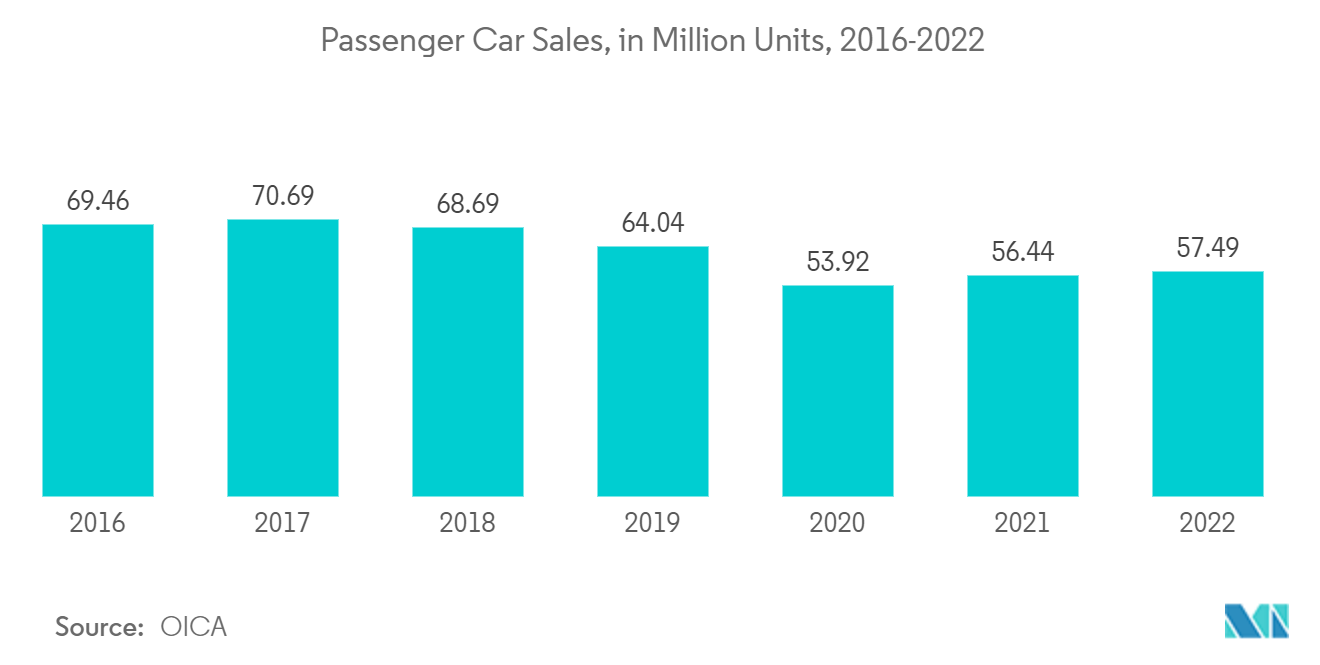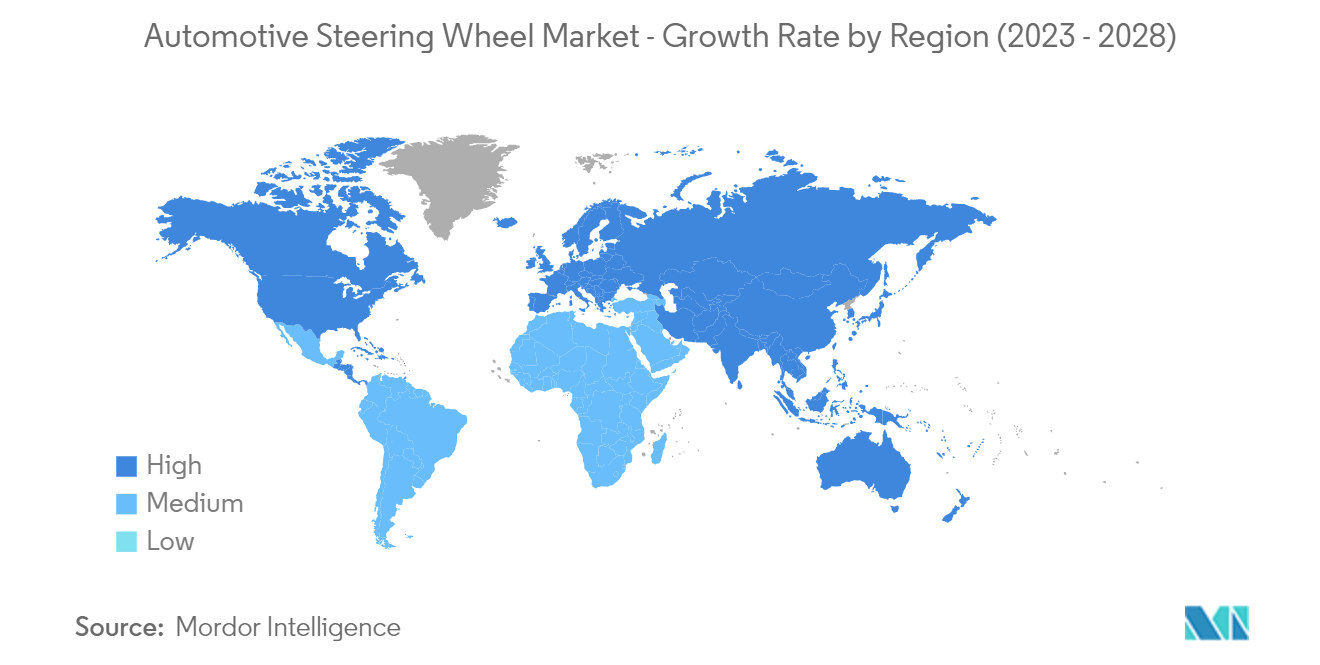Market Trends of Automotive Steering Wheel Industry
Adoption of Steer-by-Wire System Aiding Market Growth
- Several automakers are downsizing vehicles to make them more fuel efficient by incorporating modern technologies. Electronics, algorithms, and actuators replace mechanical steering connection linkage between road wheels and handwheels in the steer-by-wire system. As a result, the overall weight of the steering system is reduced. With a variable steering ratio for a wide range of driving performance and comfort, steer-by-wire also delivers greater maneuverability. Over the forecast period, the steer-by-wire systems are likely to be used for rising customer demand for better rides and driving comfort.
- Mandates for advanced driver assistance systems, concerns about in-car safety, and the development and assimilation of new vehicle technologies are notably pushing the automakers for steer-by-wire systems.
- While electric power steering eliminates hydraulic components while keeping the mechanical steering connection, Steer-By-Wire eliminates the steering linkage entirely. Electric motors turn the wheels, sensors calculate how much steering power to apply, and tactile feedback devices offer tactile input to the driver in these systems. These motors are more energy efficient, quieter, and maintenance-free. The system is controlled by software and may be adapted to various models by changing a few settings. And this may save a deal of time and resources when building new models.
- In the steer-by-wire environment, multi-axis and response torque sensors are often used to evaluate the control system layout. During the verification and validation phase, torque sensors and multi-axis sensors are inserted in the steering wheel input module and the rack-pinion transmission (actuation module) to verify and configure the steer-by-wire control system (control loop parameters, actuators dynamics. The sensors can be incorporated into the steering shaft, which eliminates the requirement for a separate sensor module.
- Major players in the market are developing steer-by-wire systems suitable for all vehicle types. For instance, in March 2022, ZF demonstrated its latest steering systems at Work Truck Week (WTW). ZF's second-generation Active Kinematics Control (AKC) is focused on the North American market by incorporating steer-by-wire technology and the rear steering system, which is now available to EVs, pickups, and heavy-duty vehicles.

Asia-Pacific to Witness a Significant Share
The Asia Pacific dominated the automotive steering wheel market across the globe, followed by Europe and North America. Additionally, with rapid urbanization in countries such as India, China, ASEAN Countries, the demand for passenger cars has been rapidly increasing, in turn boosting the demand for the steering wheel in the automotive industry.
Asia-Pacific region also accounts for the largest share as their owing to the availability of low-cost raw materials, cheap labor, increasing government initiatives towards local manufacturing, and free trade agreements with other countries. Moreover, some factors such as easy availability of credit and low unemployment rate are the major factors rising demand for cars in this region, leading to increasing demand for automotive steering wheels, which in turn is expected to drive the growth of the global market.
Also, expansion of road infrastructure across the region is likely to offer significant opportunities to the advanced convenience features, which includes control embedded steering wheels and safety features. India and China regions accounted for the highest share in the automotive steering wheel market from Asia-Pacific. Increasing population and urbanization and the rise in disposable income are the factors boosting demand in the region.
In addition, electric power steering technology has continued to evolve, with the world's first steer-by-wire systems (no mechanical connection between the steering wheels and the wheels) already in production and on the market. Going forward, the market will need to evolve further in parallel to keep pace with the improved functionality of autonomous driving systems. For instance,
- In January 2022, Tokai Rika announced that it has developed a 'steer-by-wire control unit' compatible with steer-by-wire systems that transmit steering commands to tires through electric signals. Aiming to put the steer-by-wire control unit into practical use by 2024, the company will promote it for ultra-micro electric vehicle and MaaS (mobility as a service) vehicle applications.
The market has the presence of several Japanese companies, including Toyoda Gosei, Autoliv, Takata, TS TECH. , NSK Ltd., Tokai Rika ., JTEKT Corporation, KYB Corporation, Showa Corporation, and Others. These enterprises are concentrating on expanding their facilities in order to cater to the growing client demand. For instance,
- In April 2022, Autoliv, Inc announced that it will establish a new facility in Chita city, Aichi prefecture, Japan with the purpose of optimizing its production and development sites as well as strengthening its production capacity in Japan. On a 53,000 square metre plot of land, the new facility will include a 4,300 square metre industrial plant footprint and a 9,300 square metre storage. The new factory will produce items like steering wheels and airbags.


